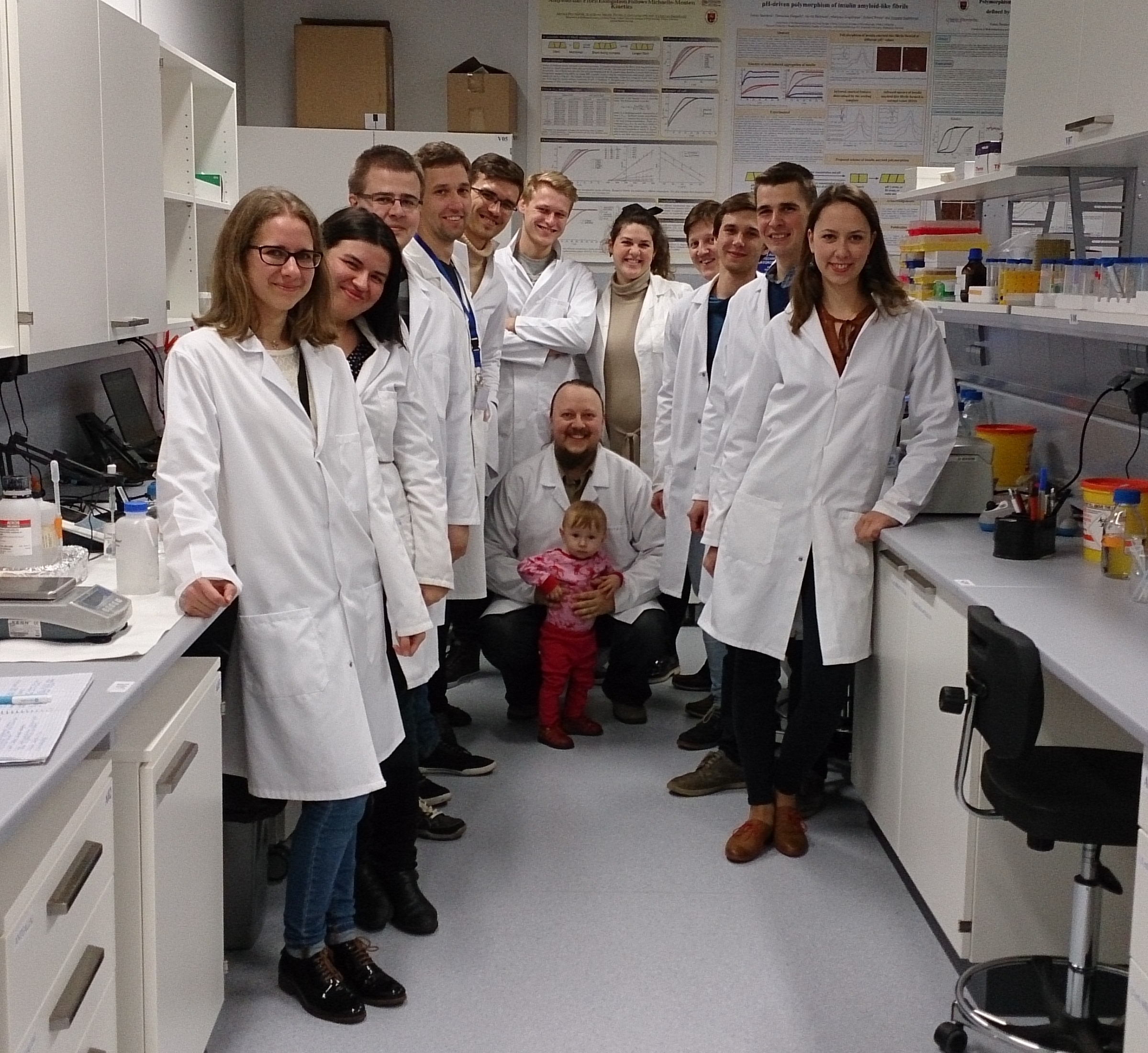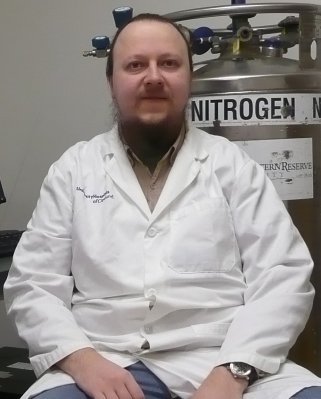Group of Amyloid Research
Protein aggregation into amyloid structure is involved in many diseases, including such neurodegenerative disorders as Alzheimer’s and Parkinson’s, systemic amyloidoses and even some localized diseases such as type II diabetes or cataracts. There is an increasing evidence of amyloid nature of proteinaceous infectious particles – prions. One of possible ways of prion spreading is self-replication of amyloid-like fibrils, thus there is a chance of all amyloid-associated diseases to be potentially infective. We study effects of environmental factors such as temperature, pressure, pH, ions, macromolecular crowding, and the presence of different organic solvents, ligands and biomolecules on aggregation kinetics, thermodynamic stability, and structural properties of amyloid-like fibrils. We believe only comprehensive knowledge of all factors may give genuine understanding of mechanisms of amyloid self-replication and thus proteinaceous infectivity.
| Publications
Group leader Dr. Vytautas Smirnovas room C-303, Saulėtekio 7 Vilnius, LT-10257, Lithuania vytautas @ smirnovas.info vytautas.smirnovas @ bti.vu.lt
|






